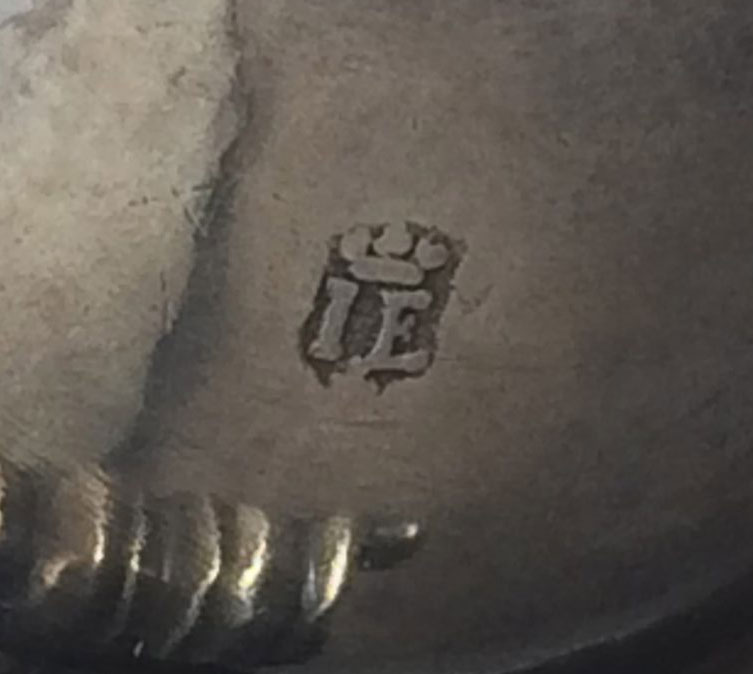Boston Silver: Craftsmanship and History
Silver antiques from 18th-century Boston are some of the most sought after items in the silver collecting world. With big names such as Paul Revere, Boston silver carries rich history and craftsmanship. The classic appeal and beauty of silver collectibles never goes out of style. Our fine antique silver from Boston is sure to enrich your collection and investment.
What is unique about early American silver, is the simple styles. This design choice is purposeful and reflective of the time period. The colonial silversmiths did not want to replicate ornate European silver. As patriots and Sons of Liberty, they in no way wanted to mirror the silver items from England. Furthermore, silver was the most reliable currency of the Colonial era. Paper money was losing value in uncertain times. Silversmiths were essentially bankers, for those wealthy enough for it. Due to this fact, Early American silver tends to be substantial in weight.
Silversmithing was primarily a family business. Sons were apprenticed to fathers, typically for 7 years. Some popular colonial Boston silversmiths are: Edward Winslow, Caleb Beal, Jeremiah Dummer, and Benjamin Burt. Here, we will discuss these silversmithing families. Although Paul Revere is quite popular, these families were outstanding craftsmen.

Seen here is Benjamin Burt’s Hallmark on the Silver Tankard Circa 1770
Seen here the front view of the Silver Covered Pitcher by Benjamin Burt Circa 1780 and its decorative engraving on the side.
The Burt Family 1706-1805
Silver Tankards, Covered Pitchers, Sauceboats, Teapots and more
The Burt family followed the silversmithing craft for several generations. They changed the style of their silver pieces depending on the design of the times. The Burt family was one of 4 that dominated the silver-making scene in Boston in the early 18th century. Benjamin Burt was born in Boston in 1729 and died there in 1805. He apprenticed with his father, John Burt, and his brothers Samuel and William Burt. Although the older brothers lived short lives, Benjamin lived to be 74 and spent between 50 and 55 years working as a prominent Boston silversmith.
There is very little history on the Burt family outside of silversmithing. Some attribute this to the fact they were busy working to fill silver orders and did not have the time to take part in anything that would leave their name in public print or documents. Regardless of their lives outside of silver, they are well-known for their classic craftsmanship and their contribution to the world of silver. Even though Edwards and Revere are well-known names in silver, the number of actual working years and pieces created by the Burt family far surpass the others.
Jeremiah Dummer 1645-1718
Silver Tankards, Spout Cups, Porringers and more
At the age of 14, Jeremiah Dummer apprenticed with John Hull, who was the mint master at Boston. Being born in 1645, he is likely to be the first native-born silversmith. While most of his works are in museums and private collections, there are several being bought and sold by collectors.
Dummer’s hallmark is “ID” over a fleur-de-lis in a heart. An alternative hallmark is “ID” in a rectangle. Although Dummer was a supporter of the British rule, he followed design trends and kept his silver designs minimal. However, it is said that he introduced “gadrooning” to colonial silversmithing. This is the design motif of a series of convex curves.
Although Dummer does not fall in the “family of silversmiths” category, he was an important craftsman. As an important silversmith, his works are some of the most sought-after and collectible pieces of early American silver.

Seen here is John Edward’s Hallmark on the Silver Tankard Circa 1720
Here is the Boston silver teapot circa 1760 by Samuel Edwards, son of John Edwards.
Edwards Family 1684-1783
Silver Canns, Caudle Cups, Porringers, Tankards, Teapots and more
The Edwards family has a long history of silversmithing in colonial Boston. John Edwards came from a long line of English silversmiths and continued the legacy when he moved to Boston. Edwards apprenticed with Dummer, and passed down the trade to his sons and grandson. Notable Edwards silversmiths include his sons, Thomas and Samuel, and his grandson Joseph. John Edwards worked in partnership with John Allen from 1696 to 1702.
Due to their English ties, their designs tend to be more decorative, with cartouches and other details. Their style of silversmithing was also mimicked by other competing silversmiths of the time. Furthermore, many of the pieces from the Edwards family are personalized. This means that they were commissioned by many wealthy families to make unique inscriptions and engravings on the silver items.




